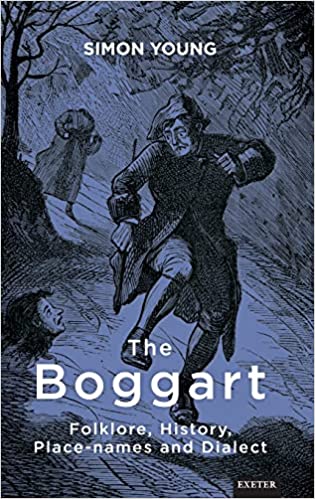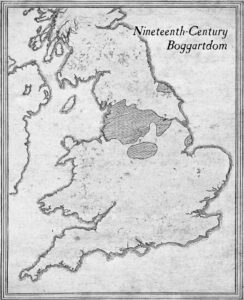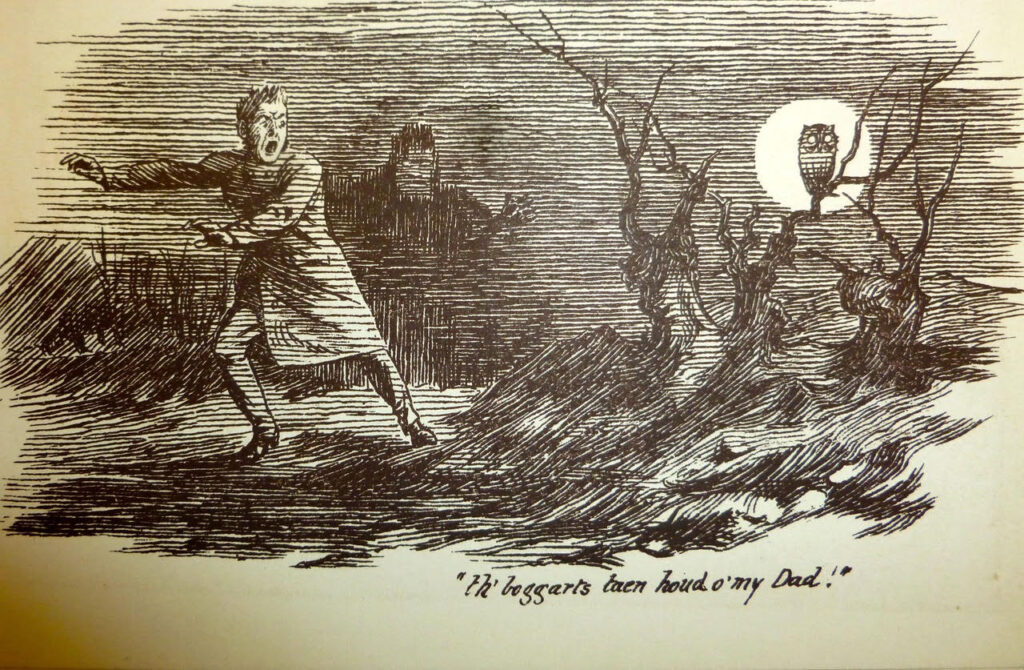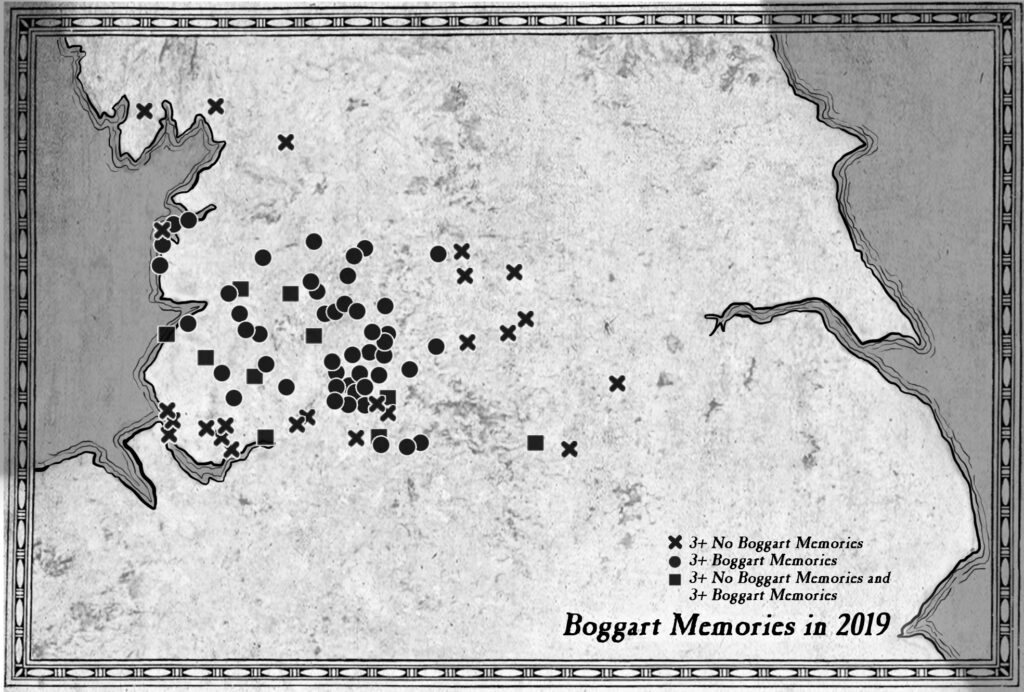The Boggart: A Study in Shadows February 15, 2022
Author: Beach Combing | in : Contemporary, Modern , trackbackThis morning, my new book comes out – The Boggart: Folklore, History, Placenames and Dialect. It is three hundred pages long and has just shy of a thousand items in the bibliography. There are lots of maps and images and, reader, if it dropped on your head from a three-storey building it would brain you.
The story of how I came to love the boggart (and neglect other parts of my life) started with the present blog about a decade ago. In the early 2010s, disillusioned with my habitual studies and recovering from a period of awful health, I began to read around a number of different subjects and write a lot on here. Looking back I was unconsciously sniffing out new areas of study. The British supernatural, in any case, soon rose to the top of the heap, and one of my first ‘encounters’ with British ‘lower mythology’ was the boggart, a north of England entity.
But what was the boggart? Katharine Briggs, my fairyist heroine, assured me in one of her fairy dictionaries (Abbey Lubbers) that this was a goblinoid being with ‘a long, sharp nose’. It was, in fact, she went on to explain, the diabolical form of the brownie (which had no nose ‘only two little nostrils’). Perhaps foolishly I trusted her. In any case, I fell in love with the boggart, and I fell hard and fast. There were, thinking back, three reasons for this.
First, I discovered that the boggart had been associated with the South Pennines where I grew up. The landscapes I had roamed through in my infancy and teens had been, before the world wars, the boggart’s backyard: the moorlands, some houses, the odd dark dell (or ‘boggart hole’) had all been pawed over by these dreadful creatures. I cannot tell you the excitement of finding places known to me were, well, ‘numinous’.
Second, there were oodles of unexamined material on the boggart. Nineteenth-century newspapers and obscure dialect publication had dedicated hundreds of thousands of words to this beastie. Digitisation has now allowed us to access these forgotten texts. I was, then, able to amass a very big source file and most of the sources were unknown to other writers on the supernatural. I started to tell people that the ‘boggart’ was Britain’s most understudied supernatural being. I may even have been correct.
Third, I had an intellectual itch. The boggart I was reading about in the Preston Courier, 1856, did not have a long nose and had nothing to do with brownie. Had – say it quietly – Katharine Briggs misled me?! In fact, almost every word I had read about the boggart in later twentieth-century sources was badly wrong: don’t let’s even start on Harry Potter. To my shame, it took me about three years to sort things out in my head. If I’d had a single tea-and-eccles-cake conversation with someone in Preston c. 1856, I would have understood what a boggart was in minutes.
The Boggart is an attempt to recreate the supernatural universe of what I call ‘boggartdom’ (the realm of the boggarts) from the early nineteenth-century to the Great War. There are chapters on landscapes, on distribution, on language and the boggart. It is much more folklore than Forteana: but there are two chapters on supernatural experiences, one on transmission and one on the ‘social boggart’.
I also – in my attempts to slay the Briggs boggart – ran a Boggart Census with boggart memories from some 1100 people born prior to 1970. One of the results of this survey is that we can see how boggart belief withered in the interwar and post-war period, to survive in some corners of the North-West. There are still families in Lancashire and Derbyshire where the ‘old’ boggart (not Katharine Briggs fantasy-friendly newcomer) survives. The old boggarts won’t, believe me, survive long…
The book retails at 50 pounds. If your income doesn’t stretch to that there is an accompanying volume entitled The Boggart Sourcebook: Texts and Memories for the Study of the British Supernatural. This is a print-on demand book: but it can also be downloaded free of charge. I don’t yet have the link, but come back in a few days and the macro will be up. This companion volume includes tens of thousands of words of boggart ephemera (mainly from newspapers); a list of all boggart placenames; and the Boggart Census in its entirety.
It would be absurd to wish the almost moribund boggart long life. I wish it, instead, with the affection born of many years of study, long memory. Sleep peacefully, old friend.






